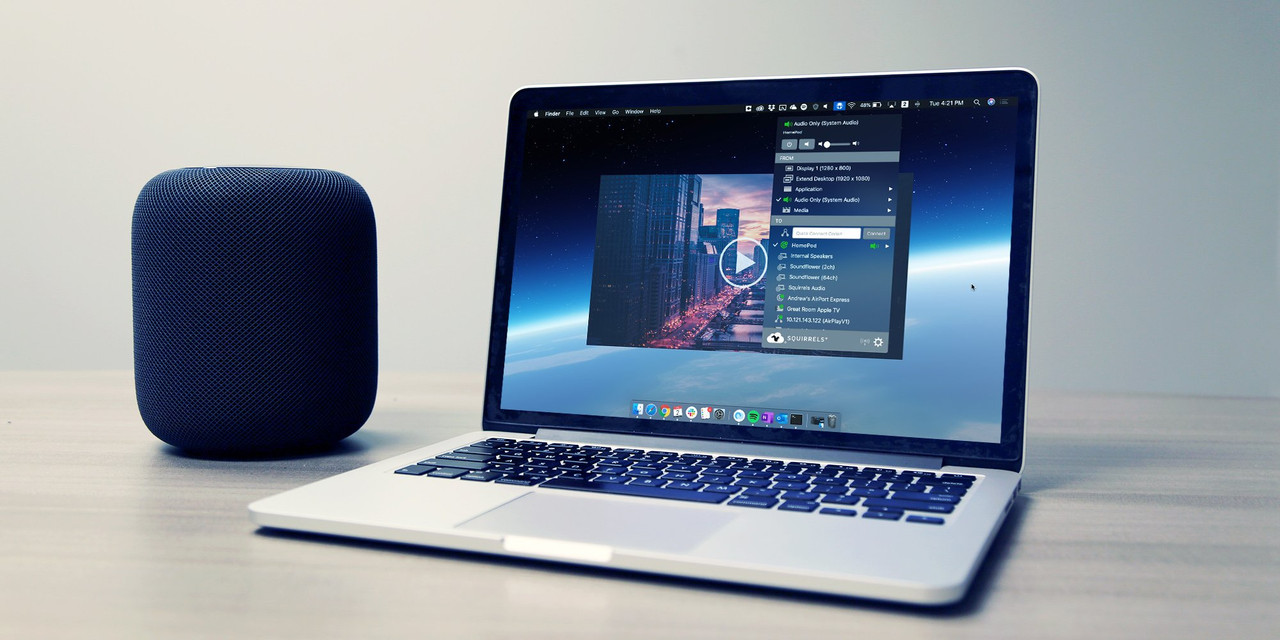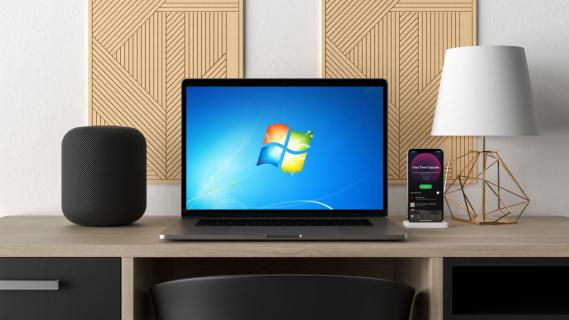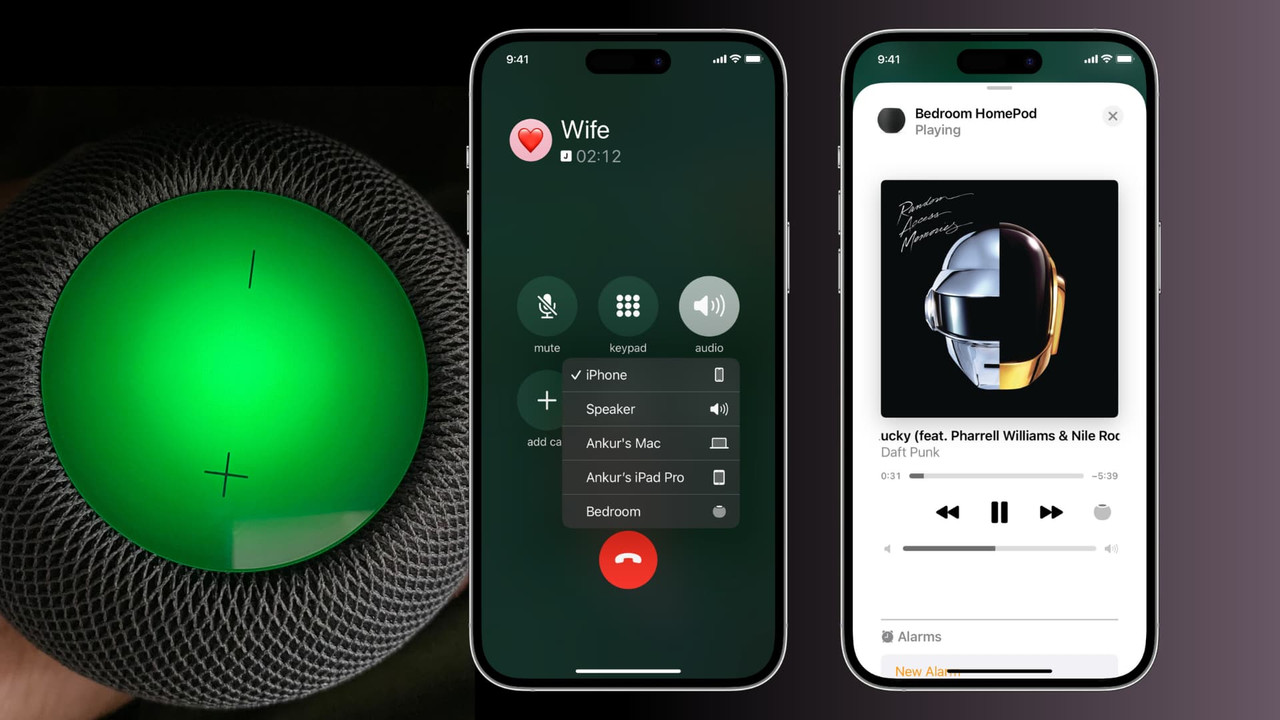Do you know how to connect an Apple HomePod to a MacBook? As shrewd speakers go, Apple’s HomePod has a few focuses that make it stand out. It has way better sound than numerous Alexa and Google domestic gadgets.
There are a number of keen speakers made by sound companies that center on sound quality, and which incorporate the capacity to utilize one or more of the voice collaborators, but the HomePod is the as it were savvy speaker with premium sound that employments Siri. If you’re in the Apple environment, this is a compelling reason to utilize it.
As for the HomePod being smaller than expected, this $99 gadget lets you get to all the Siri and keen domestic highlights without the awesome sound. It fairly has one speaker compared to the six speakers (one woofer and five tweeters) in the 2nd-era HomePod.
How to Connect Apple Homepod to Macbook?

To set up your HomePod, hold your iPhone close to the gadget and take after the enlightening. This can take a few minutes, and, with an unused HomePod, the gadget may have to download a computer program update.
Read Also: How to Connect AirPods to Android? Step By Step Guide
When this is done, go to the Domestic app on an iOS gadget, tap Rooms, select the room where you’ve doled out your HomePod, and at that point press and hold the HomePod’s tile.
Tap Extra settings, and a screen showingthe device’s settings appears. On the Mac, right-click on the HomePod’s tile and select Extra Subtle elements to see the same data. (Note: the screenshots underneath show a stereo combination of HomePods; I clarify how to interface two HomePods to play in stereo below.)
You’ll see a number of settings here, such as the title of the gadget, the room where it’s found, whether it’s in the primary Domestic scene or a Favorite, and more. Swipe up a bit, and you’ll see data around the account and its employments to get to both music—if you have Apple Music or utilize Cloud Music Library—and your individual information.
You’ll also see Siri settings. If you need to be able to utilize Hello Siri, you can flip it on here; if not, you can get to Siri by tapping and holding the best of the gadget. (And if you do this, you don’t require to say “Hey Siri” with each command.)
You don’t have to utilize Siri; if not, you will, as it were, be able to play music on the gadget by sending it by means of AirPlay from an iOS gadget or a Mac, or by bringing your iPhone or iPad close to a HomePod.
Note the Decrease Bass setting close to the best of the over screenshot; flip this on if you discover that your HomePod sounds toobassy. If you scroll down a bit more, you’ll see settings for the Intercom highlight. I examine this below.
Set Up Two Homepods as a Stereo Pair

HomePods don’t play music in stereo; indeed, in spite of the fact that the bigger HomePod has numerous speakers in its walled-in area, it’s still fairly mono. But you can set up a stereo match of two HomePods, which at that point works like a combination of stereo speakers, with one playing the cleared-out channel and the other playing the right channel of audio.
Related Article: How to Transfer Spotify Playlist to Apple Music?
To do this, set up both HomePods in the same room; at that point, from the Settings screen over, tap Make Stereo Match. The Domestic app will ask you to affirm which HomePod is the cleared-out channel and which is the right one at that point, after a diminutive. Simple way to connect Apple HomePod to MacBook
So, the stereo combine will be designed. When you play music, you see both HomePods as a single passage in the Domestic app and in AirPlay menus. If you utilize Siri commands, as it were, one HomePod reacts to these demands, plays cautions, and acts as a speakerphone.
How to Send Sound to a Homepod by Means of Airplay?

What if you need to play a few songs on your iPhone or play sound from another app? Since the HomePod employs Apple’s AirPlay convention, you can stream music to it.
To do this, begin playing a few sounds; at that point, tap the circular AirPlay symbol at the foot of the play screen. You’ll see an interface like this; select which speaker(s) you need to play the music on. Here, I’m spilling music from my iPhone to the HomePod in my living room.
Since I don’t like having Siri dynamic on my HomePods, and since Siri isn’t awesome at understanding my music demands, I select music on my iPhone or iPad and at that point stream it to the HomePod in this way. I can, moreover, effectively control it from my iPhone: altering the volume, stopping, skipping melodies, and more.
The AirPlay interface permits you to play music and stream to different speakers, so if you have HomePods or other AirPlay speakers in different rooms, just tap each one to select them. You can, moreover, do this if you’re observing a motion picture on an iPad in a room with one or two HomePods.
You can, moreover, play music in Dolby Atmos immersive sound organized on the HomePod if you subscribe to Apple Music. Not all music is accessible in Dolby Atmos arrangements, also called spatial sound, but most unused music is blended for immersive audio.
How to Hand off Music and Other Sound From an iPhone to a Homepod?
Another way to play sound on a HomePod is to begin playing music on your iPhone; at that point, bring the iPhone a few inches from the HomePod; this will “hand off” the music to the HomePod, gushing it from that speaker. The iPhone shows an exchange appearing that the HomePod has begun playing the music.
This is basically an alternate route to sending sound by means of AirPlay; you can hand off any sound that’s playing on your iPhone to the HomePod. And if you’re tuning in to sound on the HomePod, you can tap your iPhone to hand the music off to the phone.
The 2nd-era HomePod and the smaller HomePod, moreover, have temperature and mugginess sensors. You can ask your HomePod, “Hey Siri, what’s the temperature?” and it will tell you. Do you want to know complete guide on How to connect Apple HomePod to WiFi?
You can indeed ask Siri on your iPhone what the temperature is in a room, and you can indeed do so if you’re not domestic. Note that if you have numerous shrewd domestic gadgets with temperature settings, Siri may tell you that “it ranges from 19.4ºC to 21ºC in the office,” for example.
Use the Intercom Feature
The Intercom highlight permits you to send voice messages to all the HomePods in your domestic. Each HomePod must have the Intercom included turned on in its settings. (This setting is at the foot of the moment settings screenshot at the beginning of this article.)
To utilize this, say something like, “Hey Siri, inquire of everybody, where are my glasses?” This message will be broadcast to all your HomePods. Anybody can answer by saying, “Hey Siri, intercom…” and at that point, the rest of their message. To Connect HomePod mini to Mac with cable.
Get Cautions for Smoke Alerts and Carbon Monoxide Detectors
HomePods can recognize certain sounds, such as those of smoke alerts and carbon monoxide locators. To empower this, include, in the Domestic app At the beat, right, at that point tap Domestic Settings.
Tap Security & Security, and at that point empower Sound Acknowledgment. If a HomePod hears a caution, it will send a notice to all gadgets that are marked in that HomePod. The notice says "Basic" and appears, which means HomePod has identified the alert.
